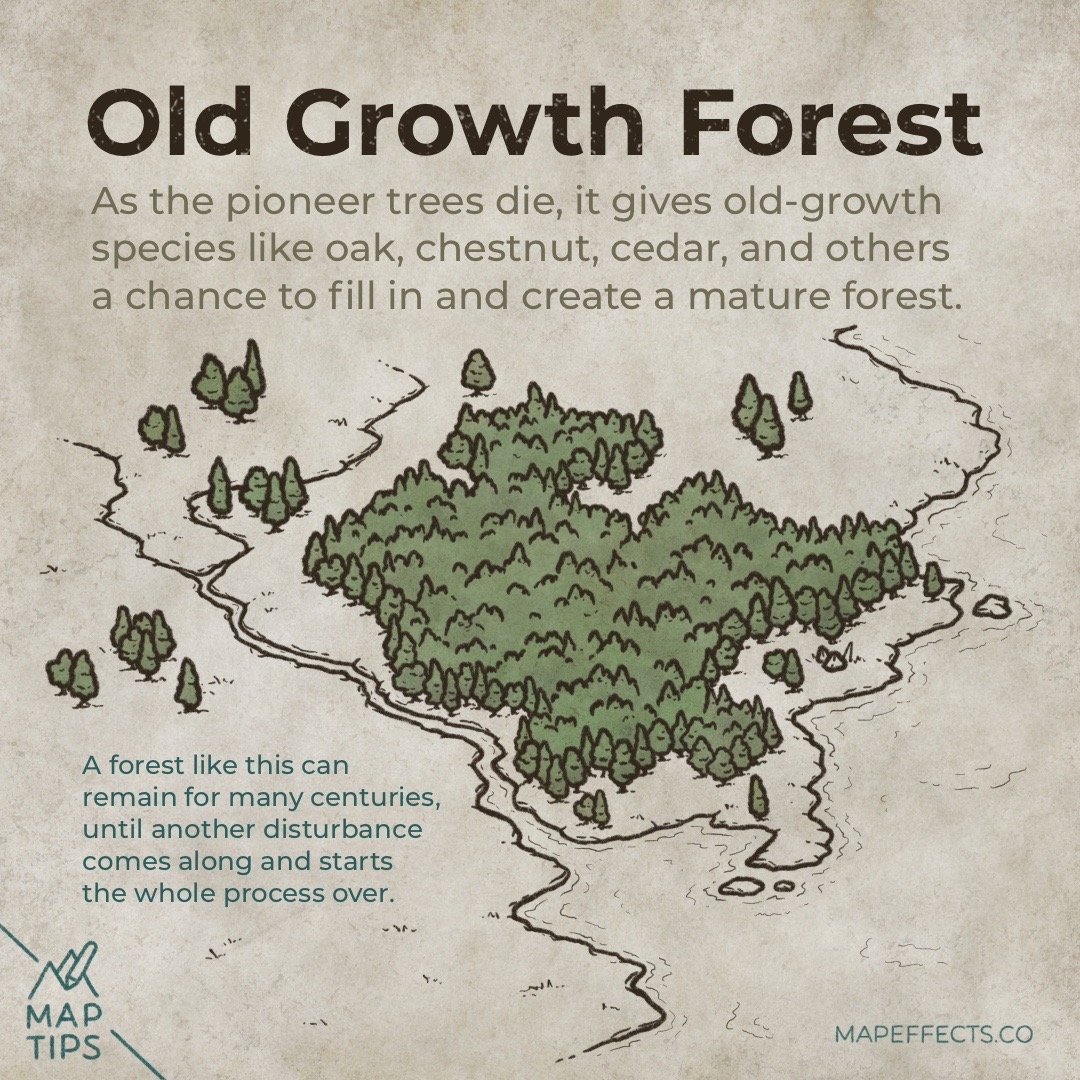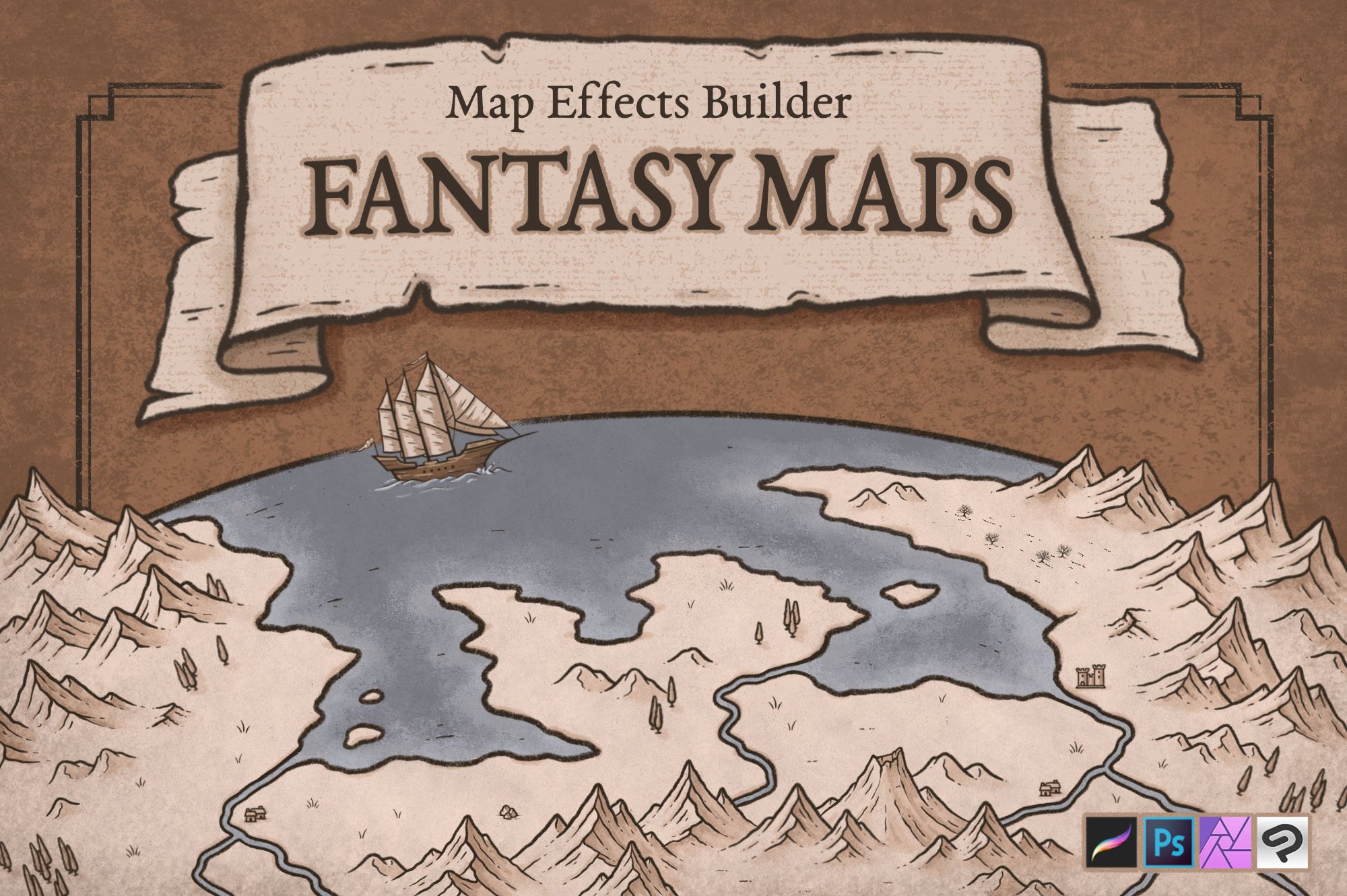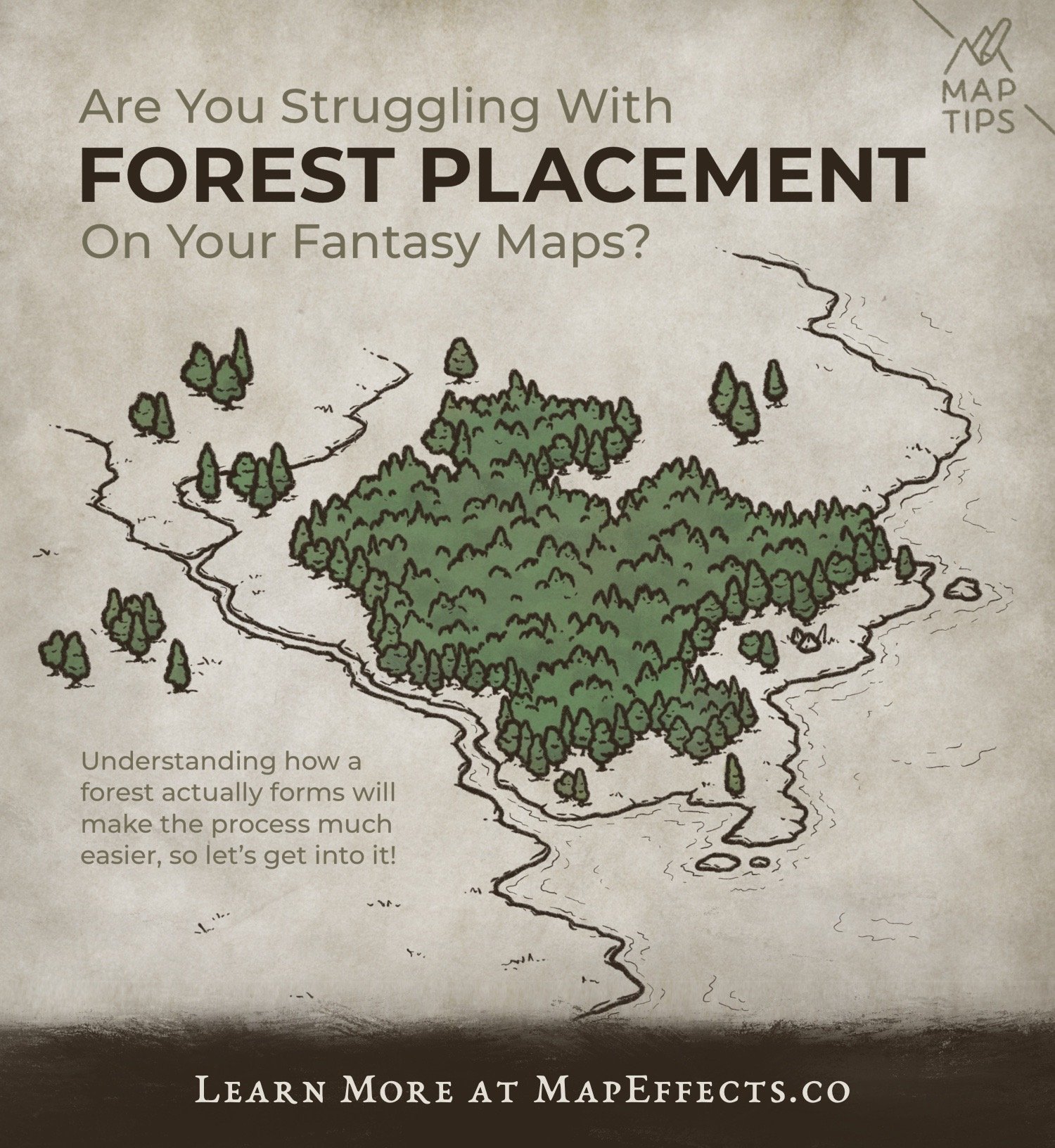Forests - Where to Place Them on Your Maps
Have you ever wondered if you’re placing forests in the right spot on your fantasy maps? How does a forest even form, and why do trees grow in one area and not another? In this Map Tip I will walk you through how a forest grows to fill a landscape so you can have confidence when placing them on your maps!
Need For Water
We all know that water is a vital resource to sustain life. But, there are many species of trees with a variety of water needs. The Mesquite tree is extremely drought tolerant and can develop roots reaching 200 feet below the surface in search of water!
Which means a forest can really form just about anywhere except perhaps the most extreme climates, through a process called Forest Succession.
Let’s look at how it works.
Disturbance
An ecological renewal happens when a landscape is impacted by hurricanes, floods, fires, or volcanic eruptions.
It may seem counterintuitive, but fires are an important natural means of maintaining a vibrant ecosystem. Some types of seeds won’t even germinate without a fire.
Grasses & Flowers
In the case of a fire, fast growing flowers & grasses will sprout, sometimes within weeks of a fire sweeping through.
Many of these plants prefer full sun and have a short life cycle. This means they will quickly grow and die back, building the soil life for the next phase of plants.
My Personal Experience with Wildfires
Living in Oregon, large forest fires are a regular occurrence; in many cases because fire has been suppressed for too long so when one starts it’s almost impossible to put it out. It’s always a bit of a shock though to drive through an area you know was a dense temperate rain forest just a few weeks earlier and now it’s just ash and charred logs as far as you can see.
But, I do vividly remember a few years ago hiking a trail that I had been on regularly before it burned, seeing it completely burned out, and then hiking it again within a year or two of the fire. I couldn’t believe how much life was springing up all around me. There was an abundance of wildflowers, shrubs, and even trees that were regrowing from burned out stumps. Not from replanting, but because I was seeing how the planet was designed to heal itself through ecological succession.
This doesn’t mean we don’t mourn what was lost, but we should also celebrate that it’s not the end of the story.
Shrub Layer
Within the first few years, shrubs will begin to fill the space and provide shelter for different species of wildlife. Many of these birds and small rodents are the means that seeds are spread into these areas.
Shrubs also provide protection for young trees to avoid browse from deer, bison, and other large ungulates. The presence of these animals is one of the primary ways an area will remain prairie, rather than developing into a forest. This isn’t necessarily bad or good since all ecosystems are important for supporting different plants and wildlife.
More Tutorials You May Enjoy
Pioneer Trees
Within a few years, fast growing trees like birch, locust, and alder will fill the landscape and create fungal dominant soils.
Many pioneer trees like the locust or the alder also take nitrogen from the atmosphere and put it into the ground. So when these short-lived species die, what is left is a rich loamy soil that is perfect for the next phase.
Old Growth Forest
As the pioneer trees die, light opens up in the canopy. This gives old-growth species like oak, chestnut, cedar, and others a chance to fill in and create a mature forest. A forest like this can remain for many centuries, until another disturbance comes along and starts the whole process over.
Interestingly enough, an old-growth forest is actually less productive in some ways than a younger forest. The reason for this is a younger forest is more actively growing, sequestering carbon, and building soil. By the time it’s a mature forest it is plateaued or in decline and almost needs the process to begin anew.
But, How Long Would This Take?
The length of time for Forest Succession to take place will vary on the location, and the type of disaster. Obviously it will take far longer for a forest to recover from being covered in a lava flow than it will from a forest fire.
Even then, scientists over the last 40 some years have been observing the ecosystem surrounding Mount St. Helens since it erupted. It’s safe to say many have been shocked by how quickly it has recovered; which calls into question many of the paradigms that are held regarding how quickly an ecosystem can rebound from a disaster.
Hopefully this will inspire you and give a better understanding of how a forest can form in a landscape, and will free you up when placing forests on your own fantasy maps.
The Fantasy Map Builder
$34 | Now Compatible with Procreate, Photoshop, Affinity, & Clip Studio Paint
Easily create hand-drawn fantasy maps for your upcoming fantasy novel or next role playing campaign without learning how to draw! Whether you want a map for the fantasy book you’re writing or want to make your role playing campaign more immersive, this has you covered. Includes 300+ hand-drawn features to help you map your story!















